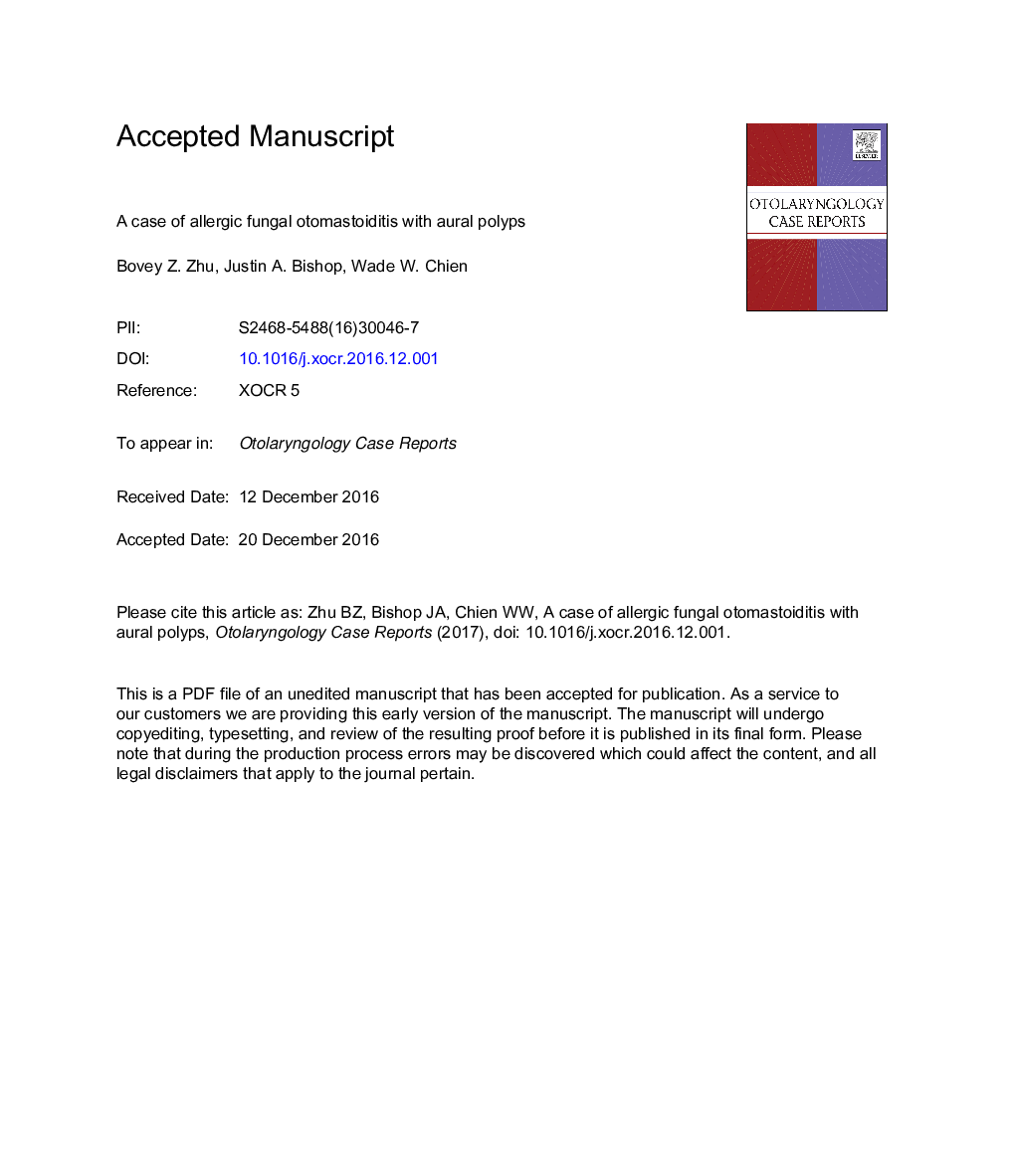| Article ID | Journal | Published Year | Pages | File Type |
|---|---|---|---|---|
| 8925078 | Otolaryngology Case Reports | 2017 | 9 Pages |
Abstract
While common in the paranasal sinuses, the presence of allergic mucin within the middle ear is rare. Here we describe a case of what has been termed allergic fungal otomastoiditis (AFOM), an unusual immunologic response to the presence of fungal hyphae within the middle ear, with a unique presentation of aural polyps. A 25-year-old woman presented with recurrent right-sided aural polyps and chronic otorrhea, despite two previous tympanomastoidectomy surgeries performed in India. CT scan of the temporal bones demonstrated complete opacification of the tympanic cavity and mastoid. Canal wall down tympanomastoidectomy was performed, revealing thick otorrhea and polyps filling the external auditory canal and middle ear, eroding the entire tympanic membrane and obstructing the antrum. Pathology revealed glandular and squamous metaplasia, marked inflammation with eosinophils, as well as allergic-type mucin with non-invasive fungal hyphae highlighted by GMS stain. The histopathologic findings of AFOM are reminiscent of allergic fungal rhinosinusitis (AFRS) and suggest a similar pathophysiology. Optimal treatment in these cases may require a combination of surgical debridement and medical management. AFOM should be considered in the differential diagnosis of chronic otitis media, particularly in the presence of aural polyps and thick otorrhea.
Keywords
Related Topics
Health Sciences
Medicine and Dentistry
Dentistry, Oral Surgery and Medicine
Authors
Bovey Z. Zhu, Justin A. Bishop, Wade W. Chien,
